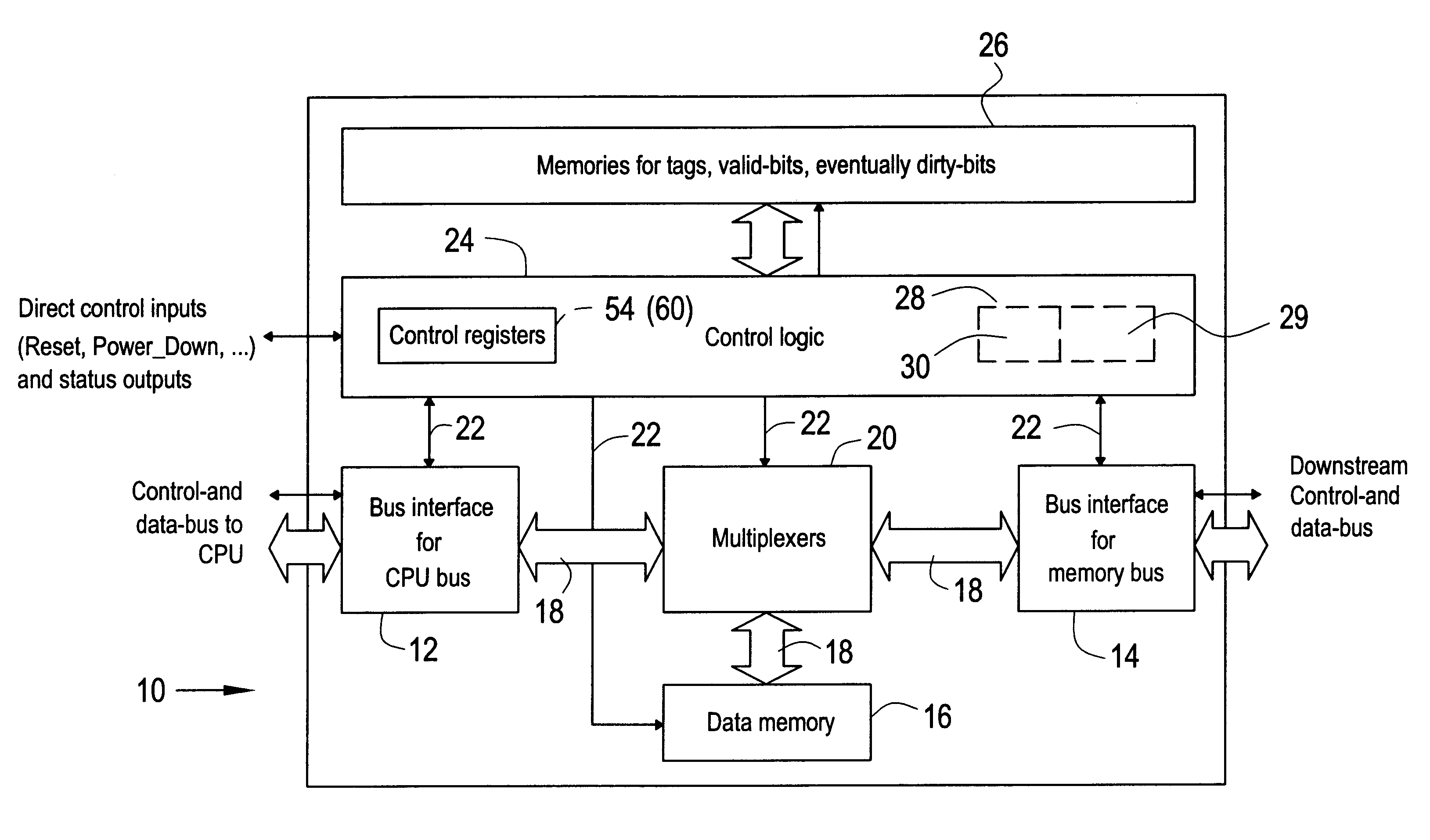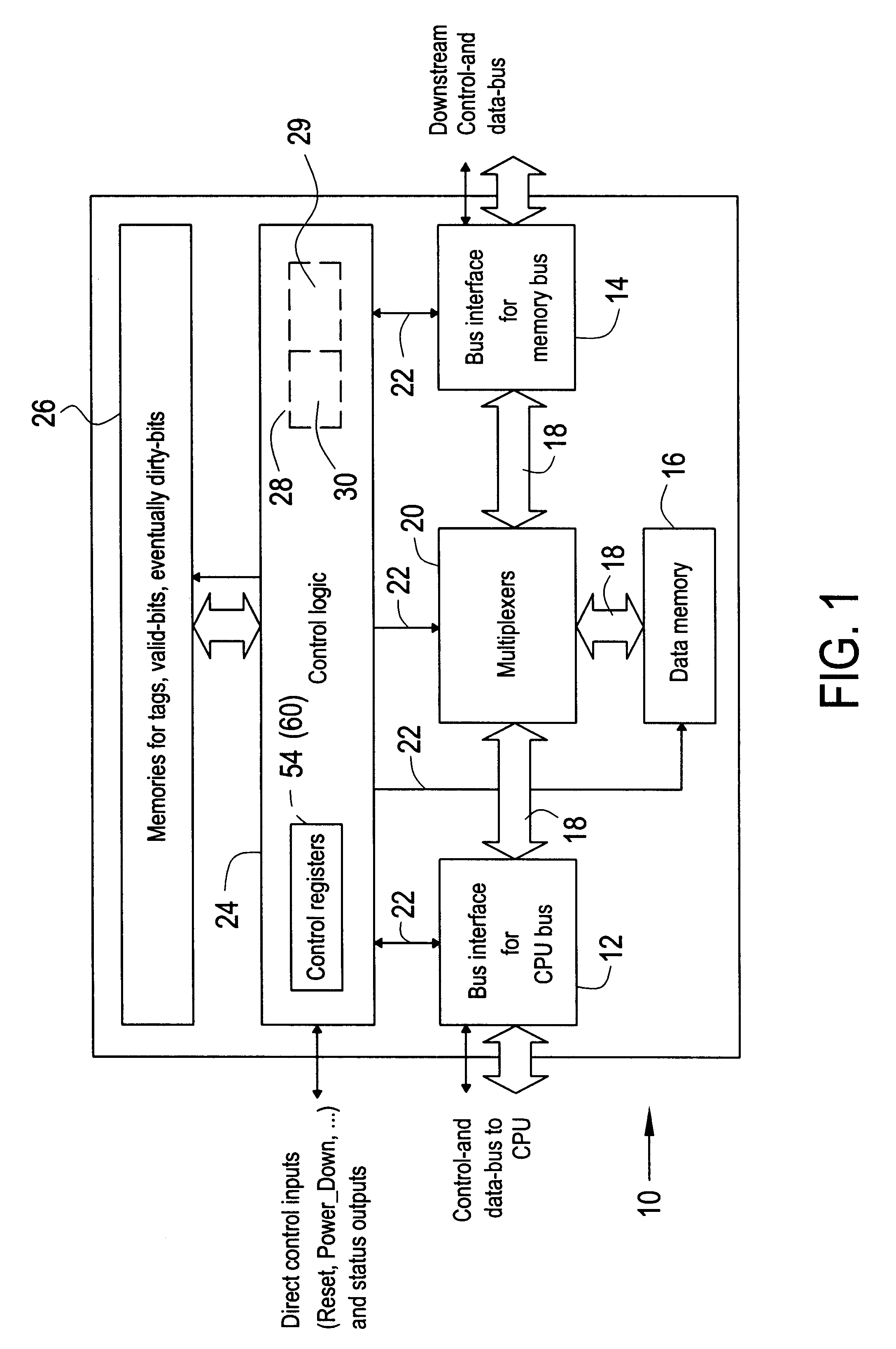Random replacement generator for a cache circuit
- Summary
- Abstract
- Description
- Claims
- Application Information
AI Technical Summary
Problems solved by technology
Method used
Image
Examples
first embodiment
Three specific hardware implementations of the pseudo-random noise generator are now described as detailed embodiments. FIG. 3 illustrates a first embodiment in which the coefficients a.sub.0 . . . a.sub.N-1 are predetermined in hardware, and cannot be varied. Such an embodiment is useful, for example, if the coefficients are optimised for a particular specific application of the cache 10. With such an embodiment, many of the circuit elements of FIG. 2 can be simplified (or "reduced"), since the coefficients are known in the circuit design, and never vary. As explained previously (in relation to FIG. 2), the combination of each AND-gate 34 and its respective coefficient a.sub.i acts as a simple switch to determine whether or not the output from the respective flip-flop Q.sub.i is fed as a stimulus input to the respective XOR-gate 36. A logical-1 coefficient corresponds to a connection, and a logical-0 corresponds to no-connection (i.e. a logical-0 then being permanently applied to t...
second embodiment
FIG. 4 illustrates a second embodiment which enables external selection of one of a plurality of fixed sets of coefficients. Such an embodiment would be useful if, for example, different sets of coefficients were optimised for different cache situations or for different applications. The different sets of coefficients are defined in a hardwired array 50, and a multiplexer 52 selects which set of the coefficients are provided to the inputs of the AND-gates 34. The multiplexer is controlled by a selection value stored in a selection register 54 in the control logic 24. The plurals sets of coefficients are predefined as hardware. If desired, the array 50 may be implemented as part of the multiplexer 52 in a hybrid circuit.
In this embodiment, all of the XOR-gates 36 and all of the AND-gates 34 are retained to accommodate all possible values of the coefficients. However, it will be appreciated that, if a particular coefficient was always a logical-1 in all sets, then the respective AND-g...
third embodiment
FIG. 5 illustrates a third embodiment which enables the coefficients a.sub.0 . . . a.sub.N-1 to be programmed externally. A register 60 stores the coefficients, and the values in the register are programmable from an external input signal via the control logic 24. In this embodiment, all of the XOR-gates 36 and all of the AND-gates 34 are retained to accommodate all possible values of the coefficients. This embodiment can provide the greatest amount of flexibility in enabling the coefficients to be defined externally. However, additional circuit overhead is required in the form of the multi-bit register 60 for storing the coefficients. If desired, the control logic 24 may be operable to load the register 60 with a set of default values defined, for example, by a hardwired (i.e. fixed) register 62 in the control logic 24.
The principles of the above embodiments may also be combined to enable external selection of one of a plurality of sets of predefined (fixed) coefficients, or select...
PUM
 Login to View More
Login to View More Abstract
Description
Claims
Application Information
 Login to View More
Login to View More - R&D
- Intellectual Property
- Life Sciences
- Materials
- Tech Scout
- Unparalleled Data Quality
- Higher Quality Content
- 60% Fewer Hallucinations
Browse by: Latest US Patents, China's latest patents, Technical Efficacy Thesaurus, Application Domain, Technology Topic, Popular Technical Reports.
© 2025 PatSnap. All rights reserved.Legal|Privacy policy|Modern Slavery Act Transparency Statement|Sitemap|About US| Contact US: help@patsnap.com



